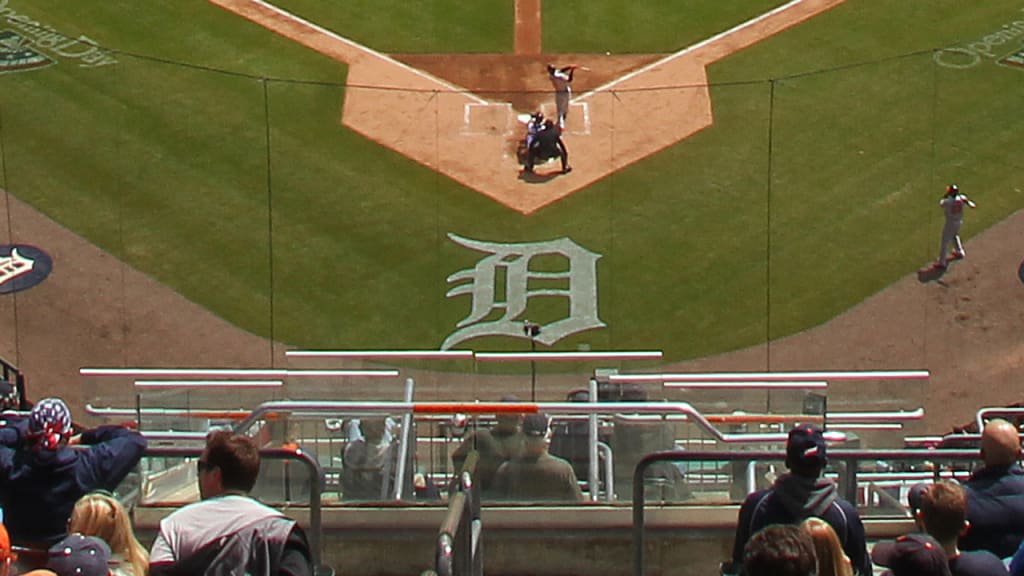
LAKELAND, Fla. -- The Tigers will have extended netting at Comerica Park for the upcoming season. That much has been known for a while. Now that the details have been released, what's new is how many seats the netting will protect, and how close to clear the netting will be.
It's clear enough that many fans watching from behind might not even notice.
The Tigers announced on Tuesday that they will extend the netting down the first- and third-base lines, protecting both infield and outfield box seats. And it will be a new, thinner netting that will preserve the sight lines.
• Spring Training: Info | Tickets | Schedule | Gear
The result will give Comerica Park a dramatic increase in protected seats while also providing some of the least obstructed views, combining fan safety with fan experience.
"I think it's a great move. It's a necessary move," Tigers catcher James McCann said. "You're protecting a lot of fans."
The changes are the result of months of study from Tigers park operations and consultation with Major League Baseball after a series of incidents around baseball put the balance of fan safety and accessibility in focus. While the team was already in compliance with MLB guidelines, the Tigers said last September that they were looking into what more they could do.
"We did our research and analyzed the data, all of which went into making this decision, and we are fully aligned with Major League Baseball's recommendation," Tigers general manager Al Avila said in a statement. "As part of our study, we looked at other MLB stadiums, and at college baseball stadiums that have extended netting to the foul poles. We made a sound choice to enhance safety and the fan experience."
The previous netting covered the seats between the dugouts. The new netting will extend past the dugouts, from Section 140 along the third-base line to Section 116 on the opposite side, and extend 30 feet up from the playing surface -- high enough to stop line drives while allowing fans a chance to catch safer popups into the stands.
For players and coaches who have had to dodge line-drive foul balls in the dugouts, the extra coverage is peace of mind.
"Honestly, it's a relief for I'm sure every person that's ever been on a baseball field and in a dugout, to protect our fans," Tigers manager Ron Gardenhire said. "We get hit, and we catch these doggone things [for a living]. We have to protect our fans. …
"To protect people and to protect the kids that are in the stands, I think it's a must in every ballpark. And I think most people on the field will tell you the same thing."
Along with deciding how much area to cover, the Tigers looked into the netting itself, testing different threads and styles. Avila was part of the process, sitting in the stands behind different net samples to get a firsthand look.
The new netting, made by Promats Athletics, features thread with a width of 1.2 mm, compared to the 1.52 mm width of the old netting behind home plate. It's also knotless, and is advertised by Promats as the first netting to offer 95 percent spectator visibility.
The thread has a dark green color that better blends with the backdrop of the infield grass. The combination makes it easier to fans to focus on the field through the screen, a fraction of a difference in thread size making a world of difference to the eyes.
The netting has had a preview in Spring Training at Publix Field at Joker Marchant Stadium, where the close proximity of the seats gives fans little reaction time to foul balls.
Bobby Crim is a former Michigan House Speaker and a Spring Training season-ticket holder. He was in the stands in Lakeland when a fan was struck by a line-drive foul ball a couple of years ago.
"Every time I look at that net, I think that won't happen again," Crim said.
That doesn't mean there won't be an adjustment involved. Jose Cabrera tried to toss a ball into the stands on his way from first base into the dugout, only to have it bounce off the net. Players have gone farther down the foul lines to sign autographs. Still, fans and players agree those are minor impacts compared to the risk of balls entering the stands at high speeds.
"How many people pay 100-percent attention to that hitter when he's in the box? I watch around and I see people talking," Crim said.
Players and coaches see it, too. Hitters follow the path of their foul balls.
"This is just a way to protect the fans," McCann said. "That's the big thing."

